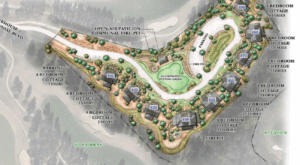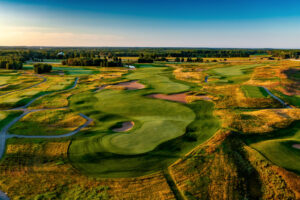By Jason Bruno
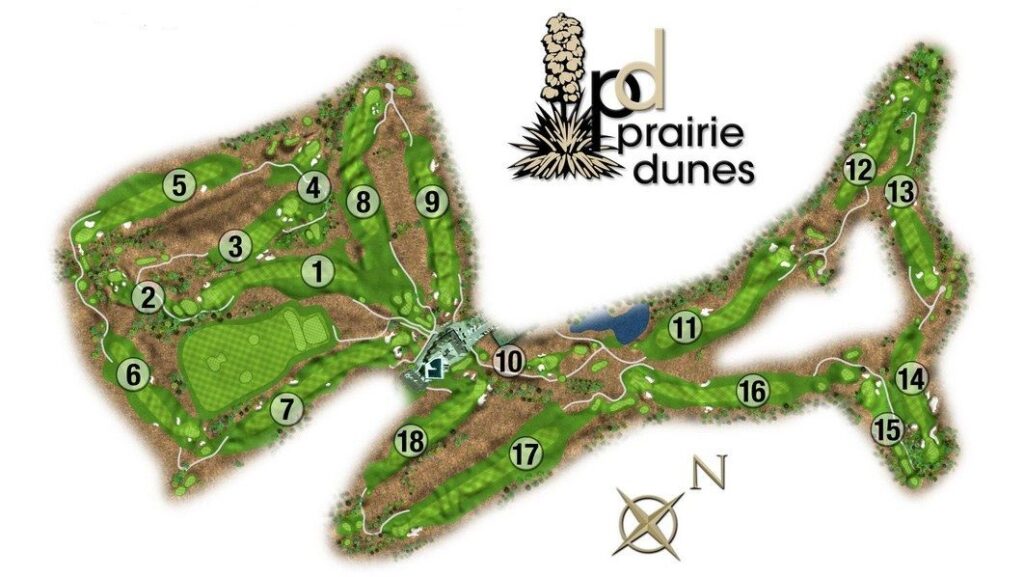
Prairie Dunes originated as a Perry Maxwell nine-hole course for its first two decades of existence from 1937 to 1957. By the time the club had the necessary currency to expand it to a full 18 holes, Maxwell had passed away. Perry’s son Press took on the task of creating the additional nine, designing three on the front and six on the back to complete the layout. Press did well to blend some of his own extraordinary work with his father’s highly acclaimed design. Today, 85 years since Perry Maxwell finished the original 9 holes, Prairie Dunes is hailed among the game’s finest architecture gems. In fact, upon walking the land and surveying the site over several weeks, Maxwell proclaimed, “There are 118 holes here, and all I have to do is eliminate 100.”
Earlier in the fall, we visited Hutchinson for a magnificent 36 hole autumn day in the land of prairie grasses, yucca plants, cottonwoods, and windswept sand dunes. Although Perry’s original nine (holes 1, 2, 6, 7, 8, 9, 10, 17, 18) are thought to be the finest designs at PD, I personally found a few of Press’ designs to be worthy of similar accolades – the three-hole stretch that is now 3 thru 5 fits in seamlessly with the ingenious use of the dune that cradles the second green, as well as several of the short 4’s (including the previously mentioned 3rd), holes 12 thru 14 fit nicely on the land). Hope you enjoy our photo tour of Prairie Dunes with brief descriptions of each of the eighteen holes . . .
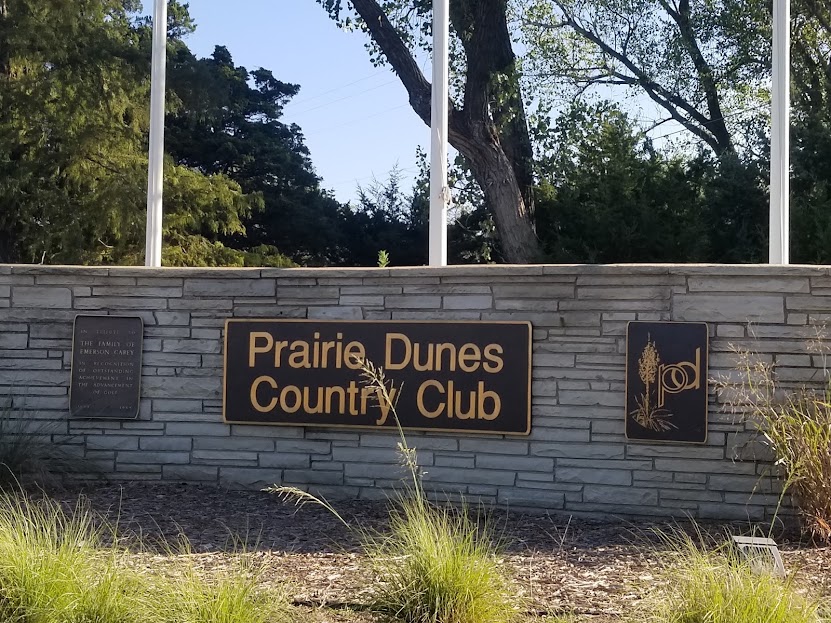
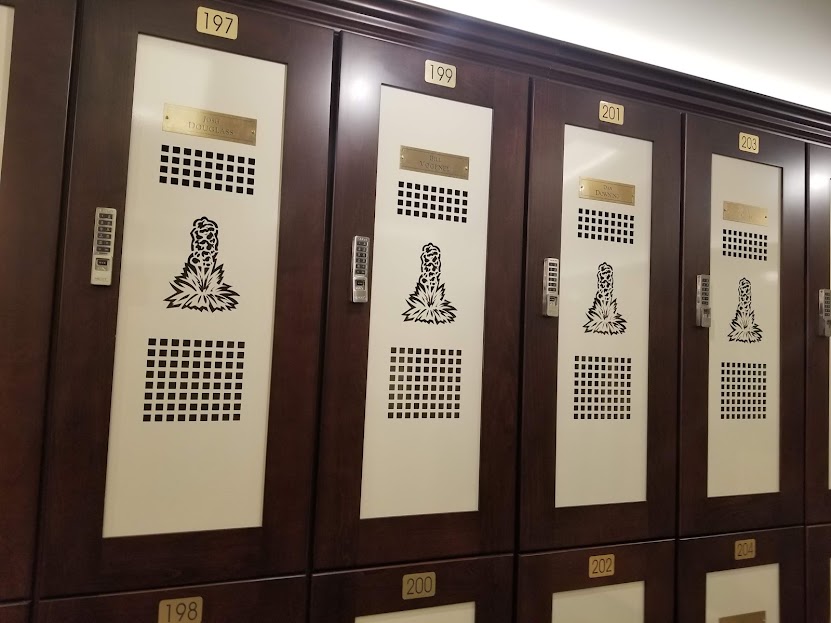
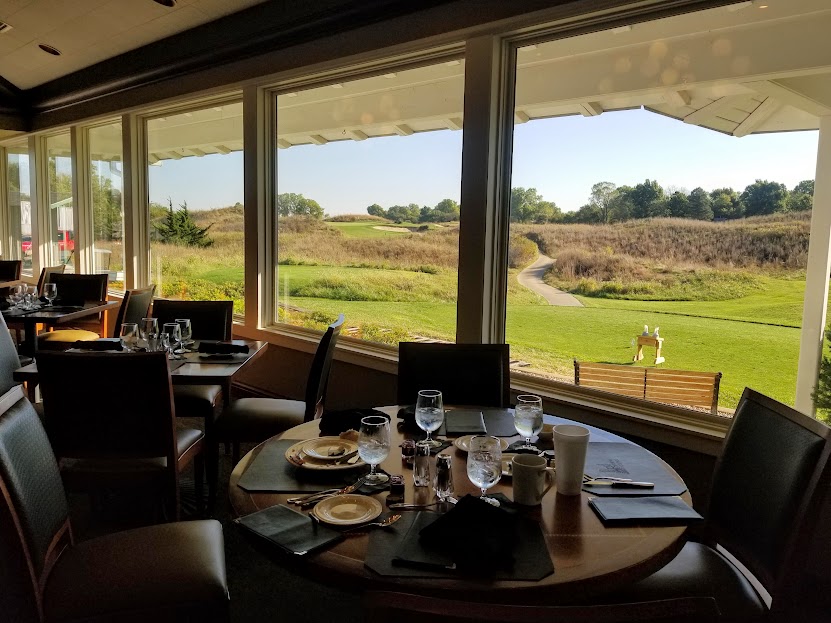
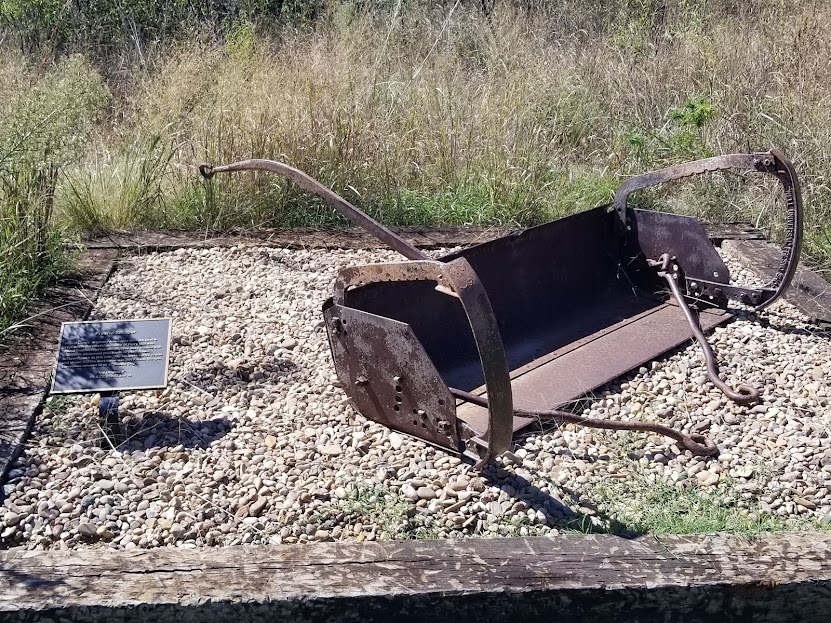
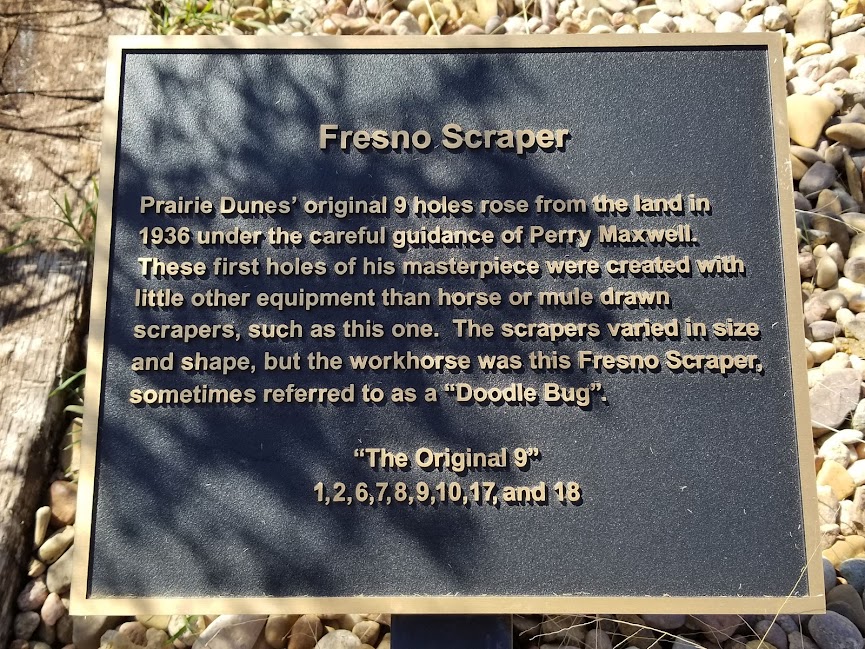
Perry Maxwell was a true minimalist architect during the days of the Great Depression, he eschewed all types of mechanized equipment. In fact, the heavy lifting at Prairie Dunes was done by the use of horses, and mule-drawn Buck and Fresno Scrapers.
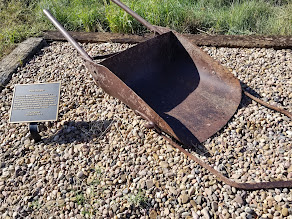
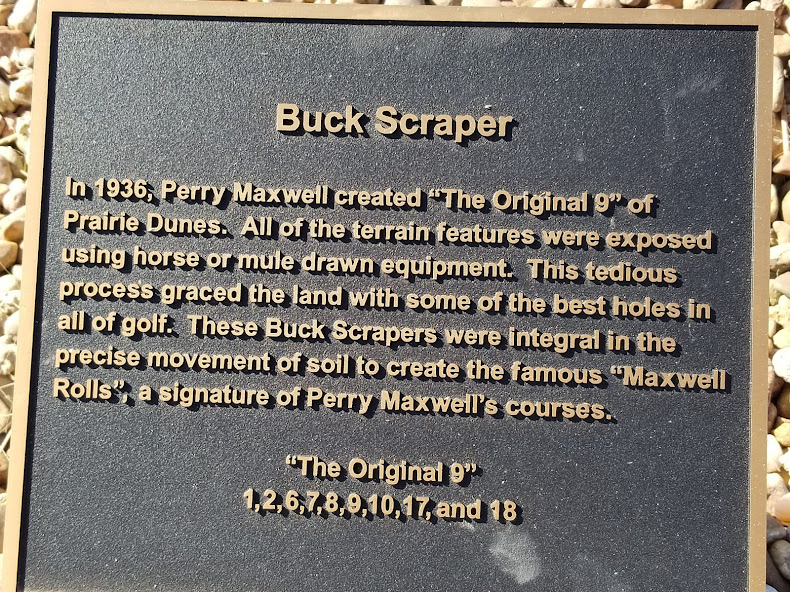
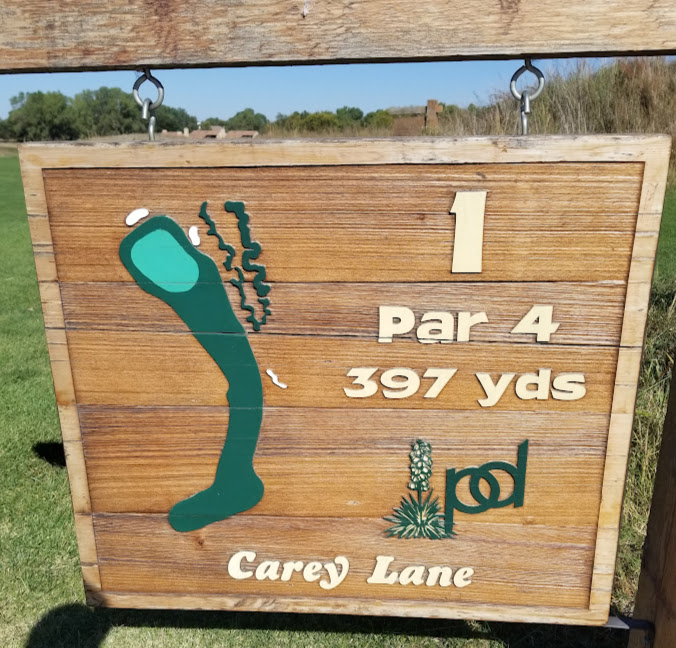
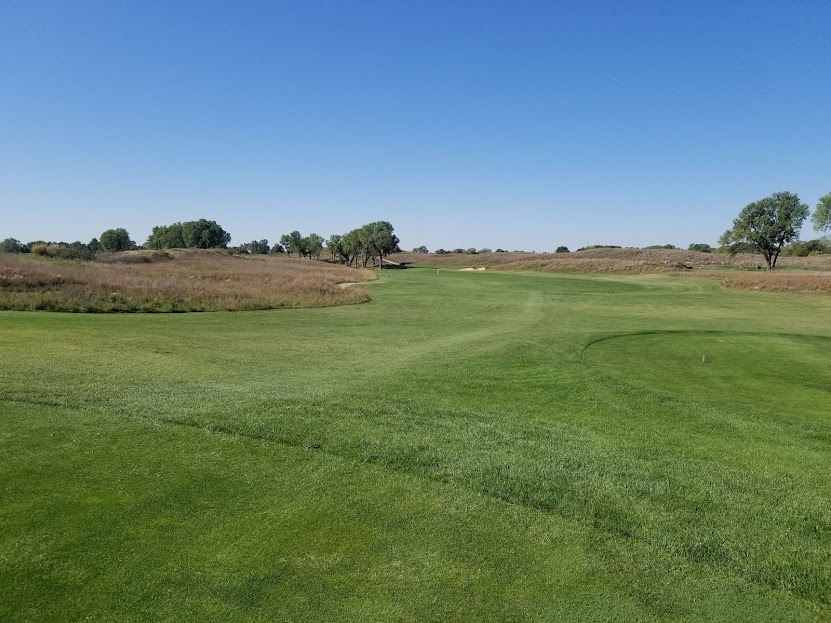
Prairie Dunes starts off with a pretty reasonable right to left par 4, there’s more room than it appears and the better angle into the green is left-center, however, the tall native grass provides a sufficient deterrent for challenging the corner. Stripe it or reload, no point looking for strays at PD.
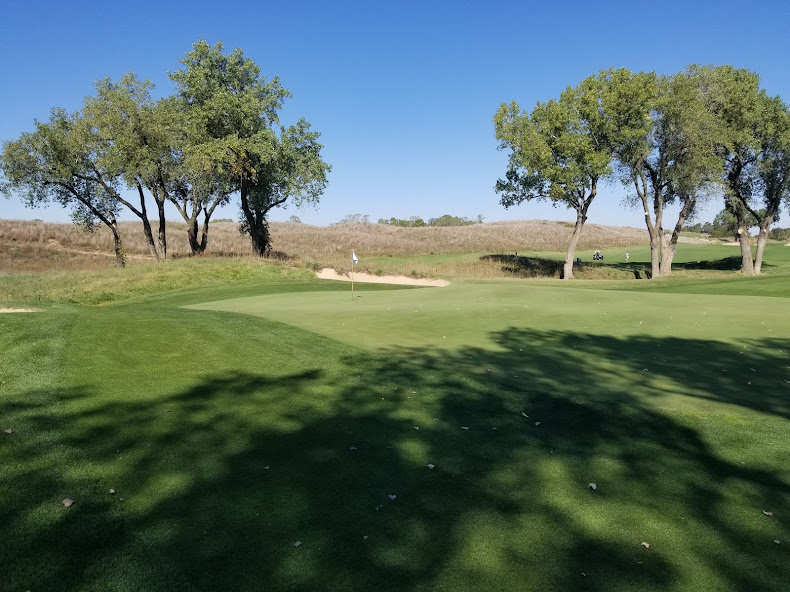
A glance back at the 1st green as you walk to the next tee gives clues to Maxwell’s complex putting surfaces. This back right-hole location tests your shot-making skills right out of the gate.
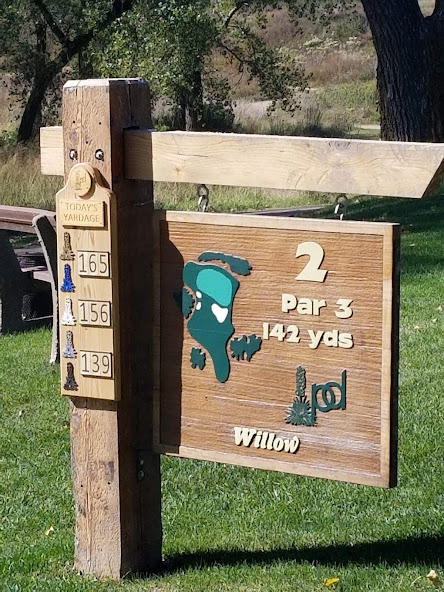
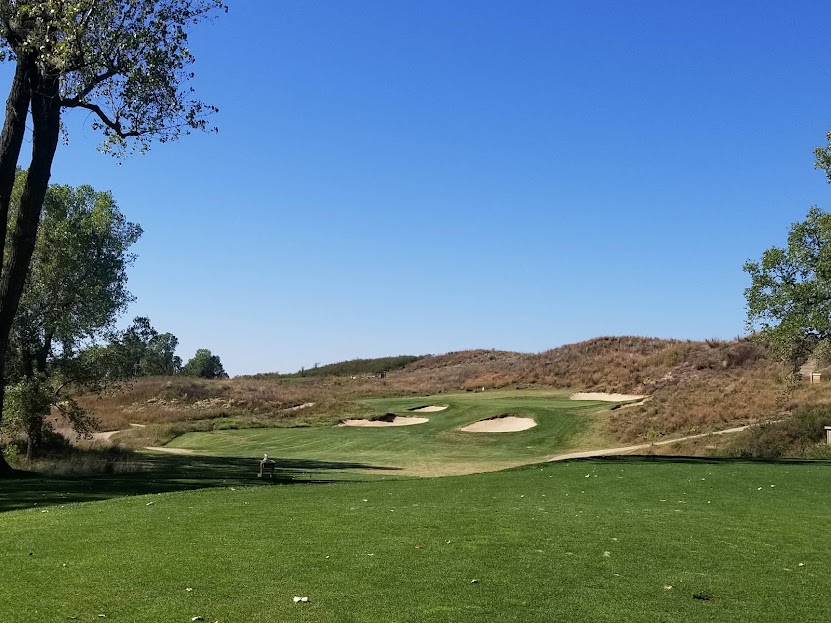
The par 3 second plays up into the sand dune, best to aim at the center of the green here. Perry doesn’t provide a cushy start at PD, if not up to it, your iron game will be exposed.
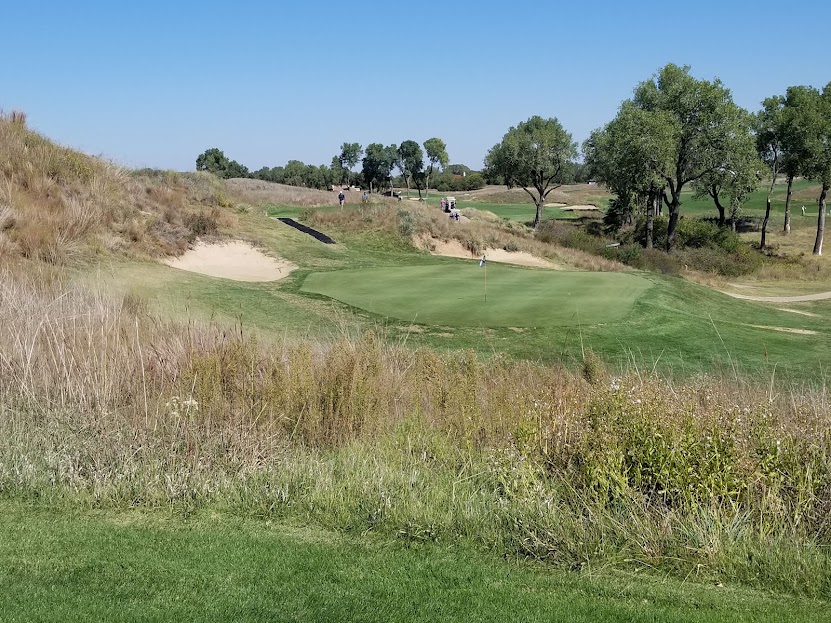
A look at the surface from the sixth tee (the original third) shows the multiple falloffs front, right, left, and back. The middle section provides the only safe haven. Trust me, you’ll wanna stay out of the back bunker – unless you have a “Seve cheat code” the chance of getting up and down is nil. 3 is a great score on this hole.

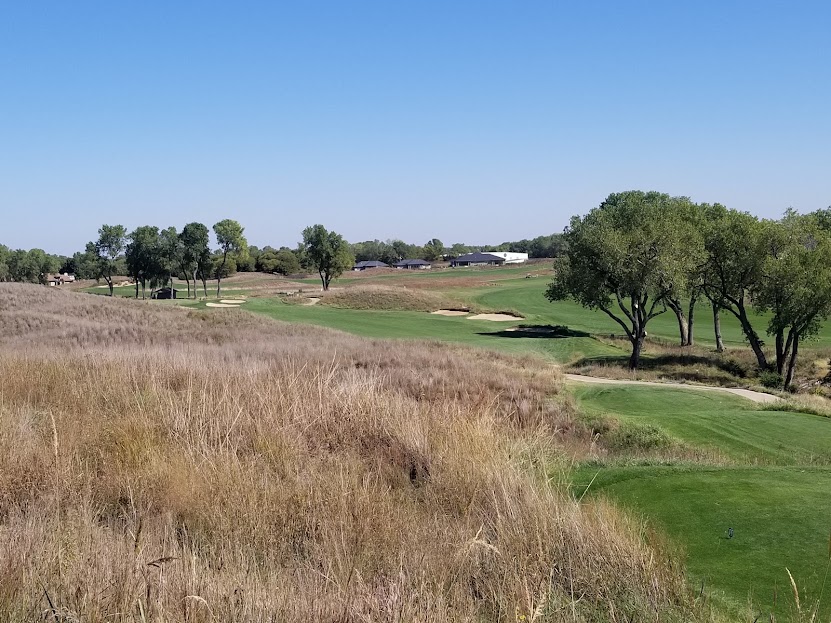
The first Press Maxwell hole on the course, the tee on the short par 4 third shares the same dune as the second green and the fifth hole. A pure finesse hole that requires no more than hybrid/long iron and a wedge.
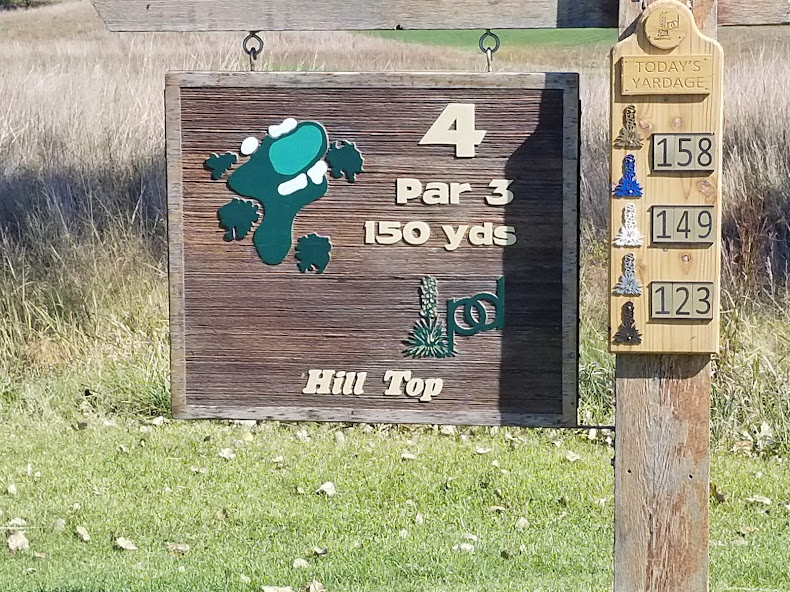
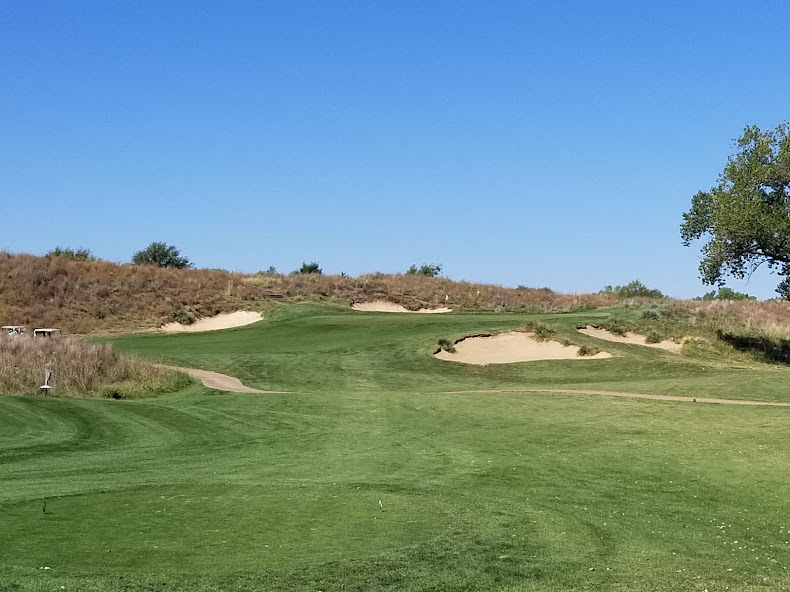
The uphill par 3 fourth features a steep false front left and deep bunkers front right, and a plethora of mayhem for anything that ends up long.
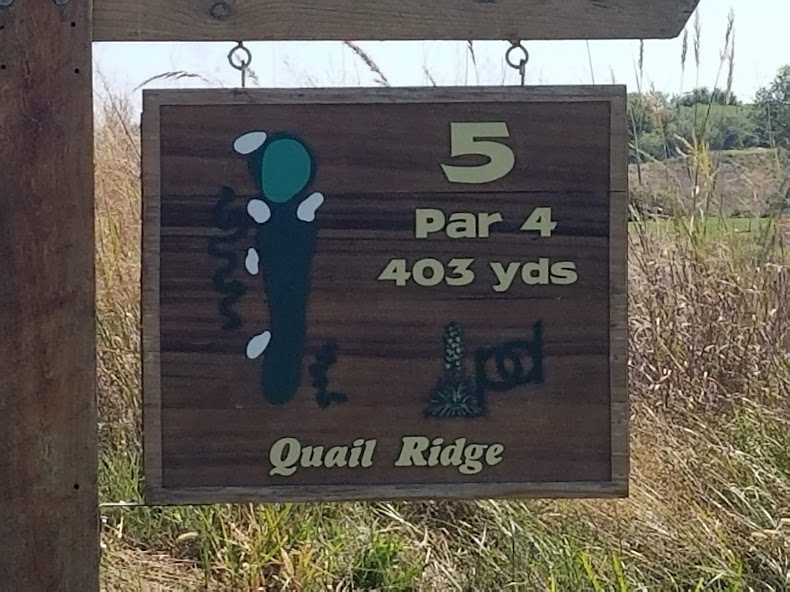
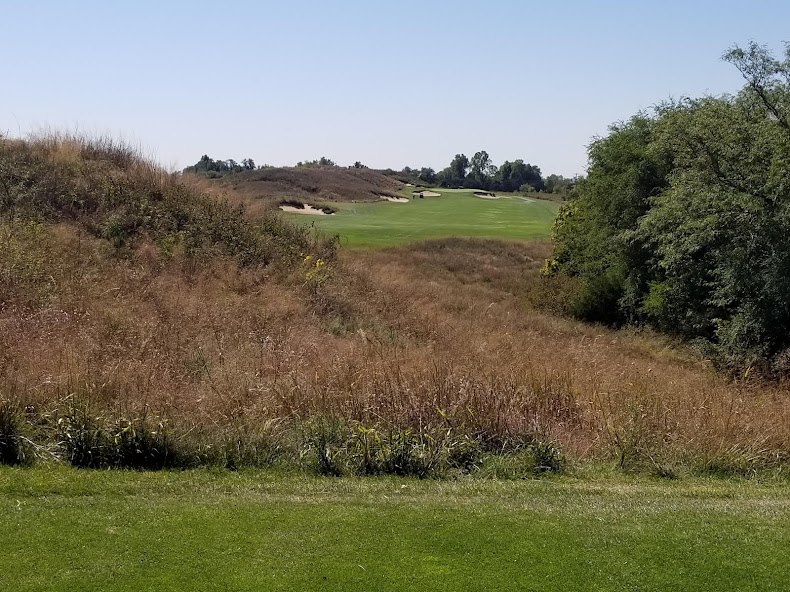
Press astutely used the same dune to create a worthy trio of holes connecting to his Father’s nine. The left to right sloping fairway here at the fifth is an ideal contrast to his short third. Where the third offers a decision on the tee similar to Riviera’s tenth (playing at just over 300 yards), the fifth (430 yards) requires two center face strikes for any chance at success. The tee shot favors a slight draw to hold against the severely angled left to right fairway.
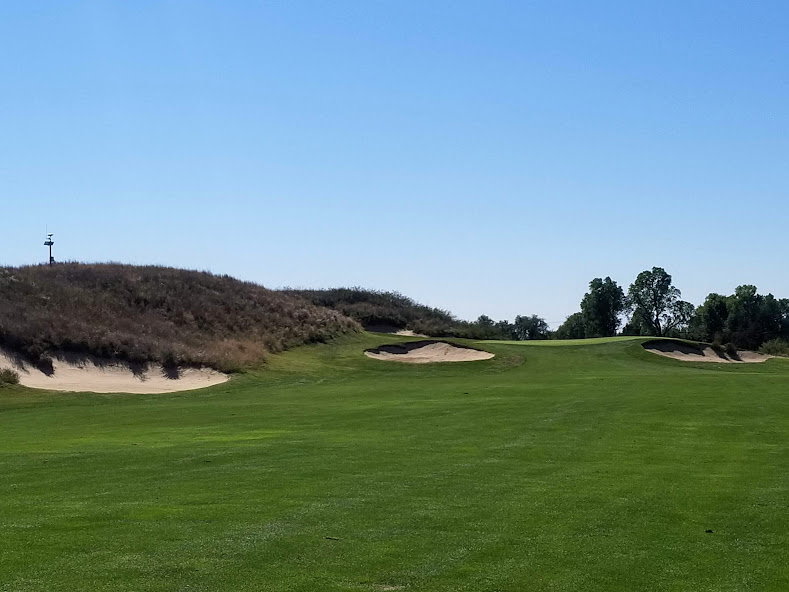
The fairway levels out as you approach the green, but only the longest hitters will get this vantage point for their approach. As you can see, the task that lies ahead if you miss this green won’t be easy.


The short sixth (Perry’s original third hole) turns ever so gently, a right-center tee shot leaves just a wedge to a small back to front shaped green.
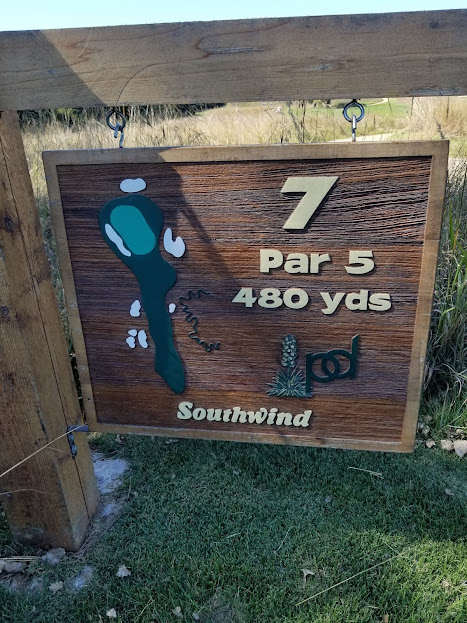
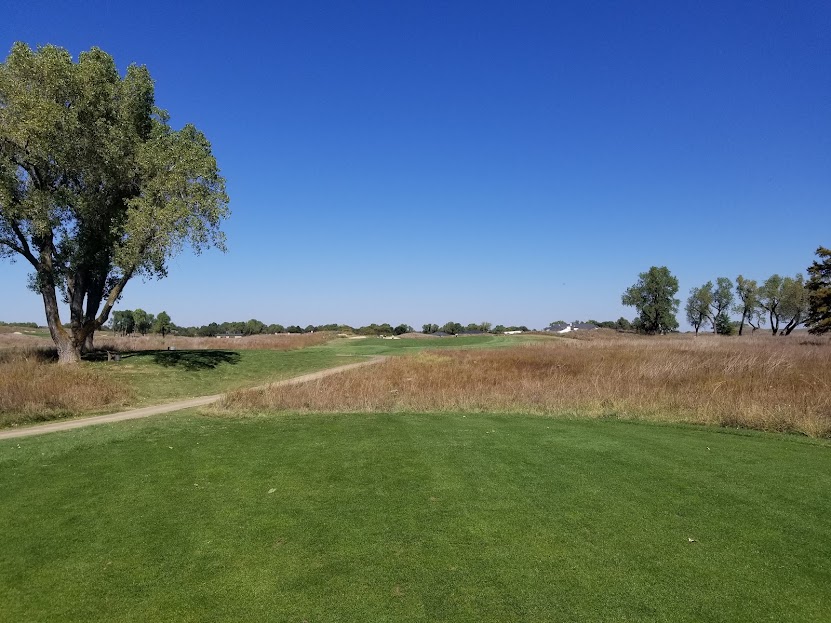
At 521 yards (just 487 from the middle tees), the par 5 seventh gives a chance for many to get home in two.
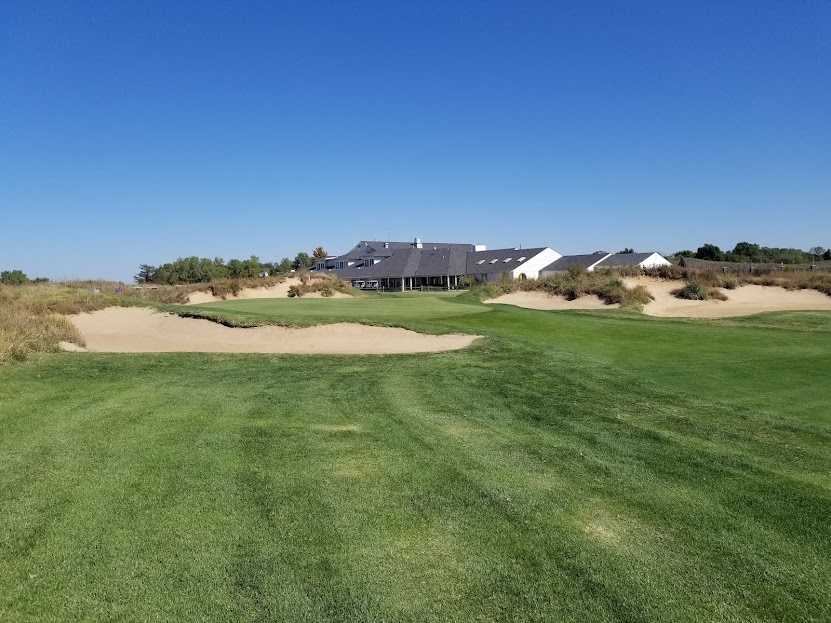
Although reachable for some, it doesn’t come without several pitfalls surrounding the green, which is guarded by some brilliant bunkering, dense bluegrass rough, and of course the tall native areas. Superintendent Corey Griess and his Agronomy team do a fantastic job presenting the layout and providing the playing conditions that support the ethos of Maxwell’s design.
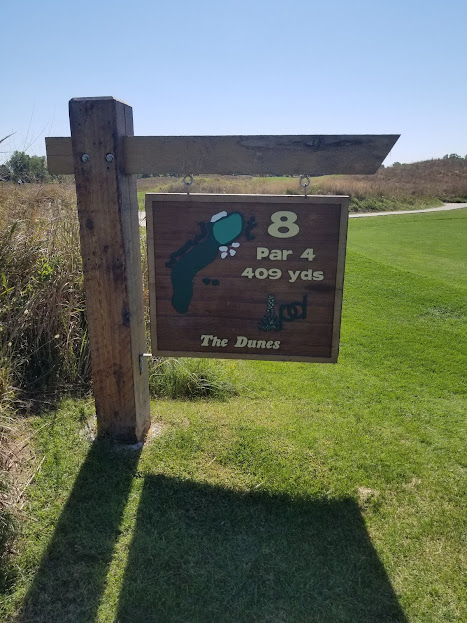
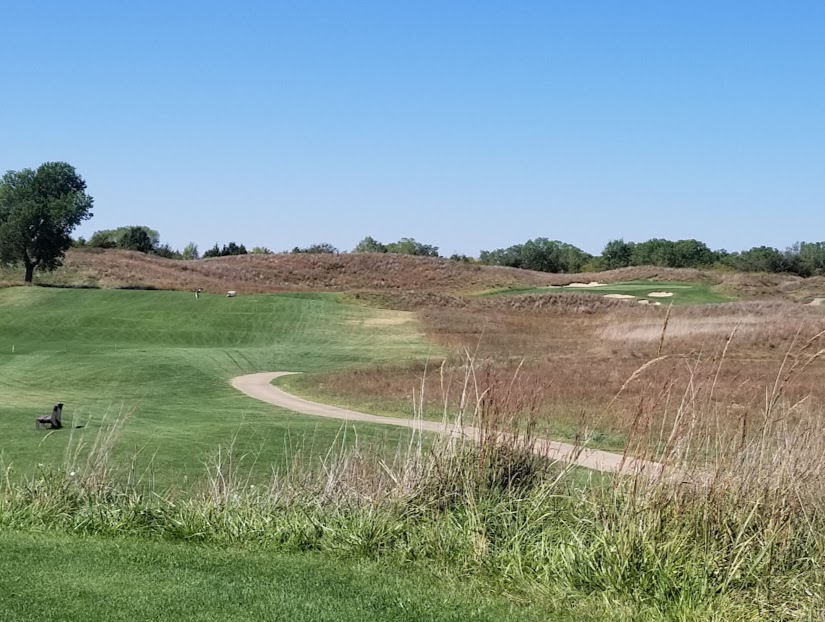
At 440 yards uphill (471 from the tips), the eighth might be the best-known hole at PD. Aptly named “Dunes”, it twists and rolls left to right up the dunes land. A left-center tee shot gives you the best opportunity to succeed here.
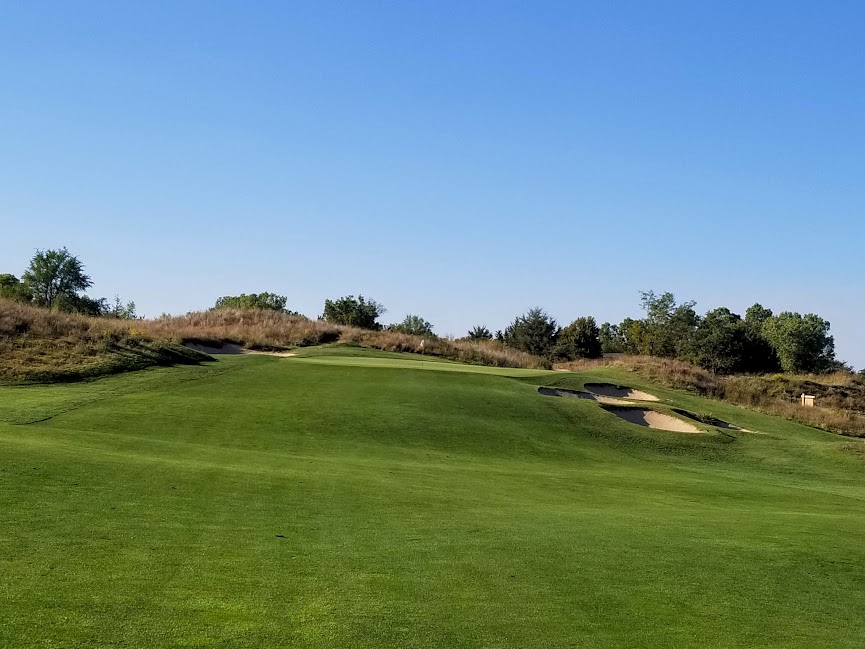
Many consider the eighth and its severely elevated and tilted left to right green complex as perhaps Perry’s toughest challenge on the course, tough to disagree.
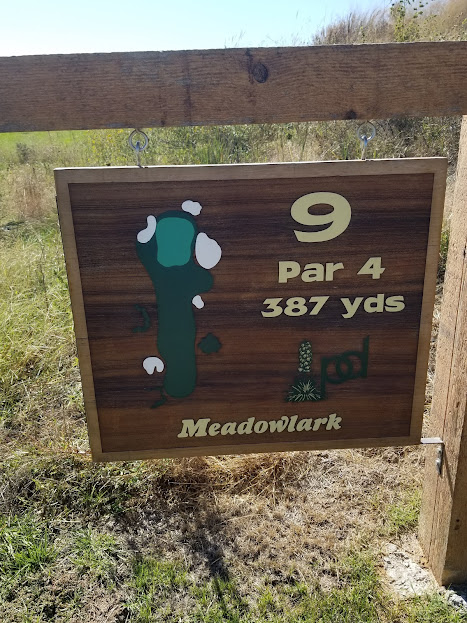

PD’s outward nine finishes off with a trek back to the clubhouse – the 430 yard ninth (474 yards from the tips) tee shares the dune with the eighth green. Prevailing right to left wind aids in positioning your tee shot to the left-center portion of the fairway – the ideal angle into our personal favorite green on the property (below).
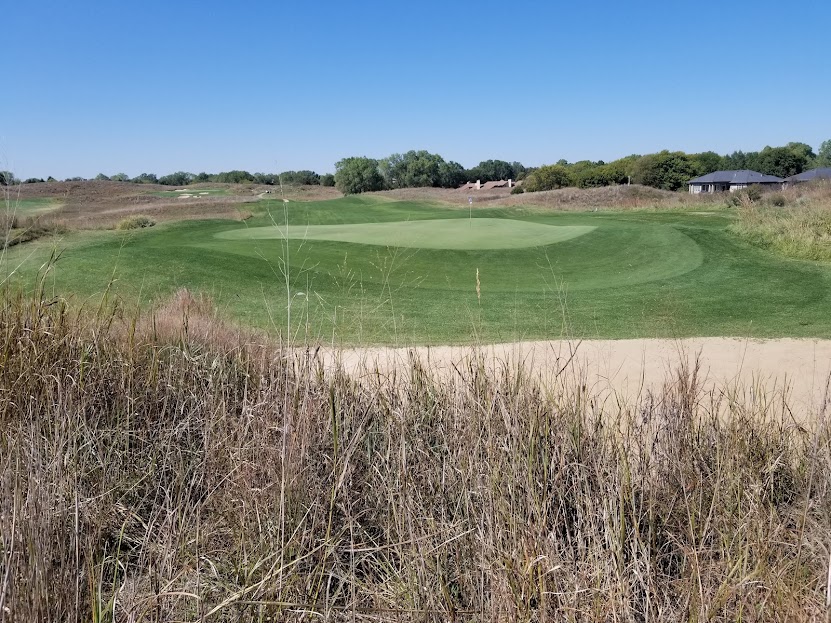
A view from the dune behind the ninth green shows Perry’s extreme runoffs, where imagination and execution must merge to save par.

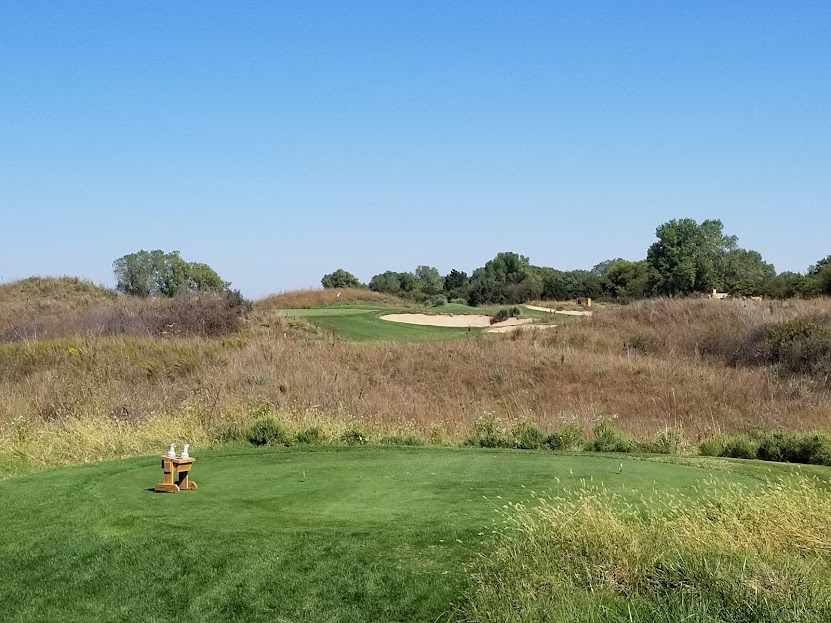
The tenth is a breather so to speak, just a stock short/mid iron with a slight helping breeze on the October afternoon that we played. The biggest distraction here on the tee is the intoxicating aroma coming from the grill room, and the member’s eyes upon you while dining.
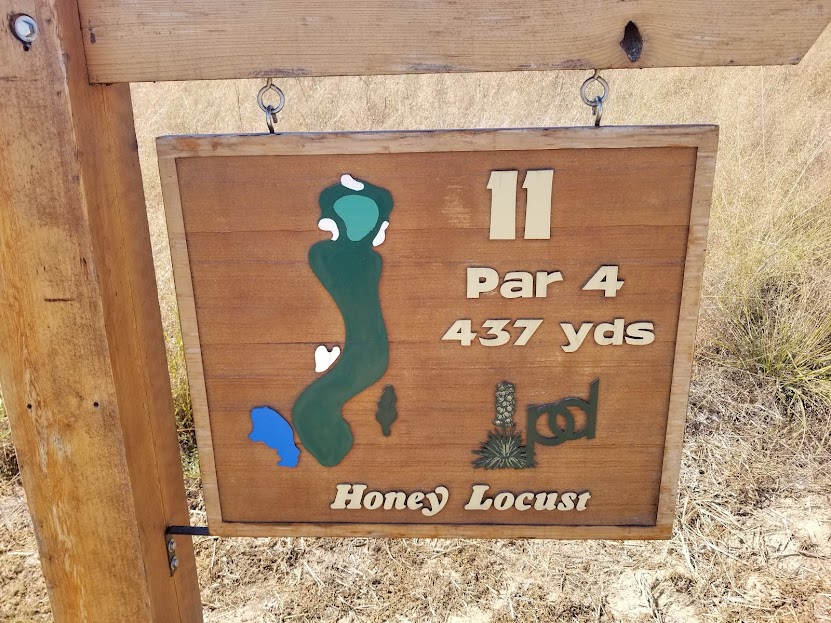
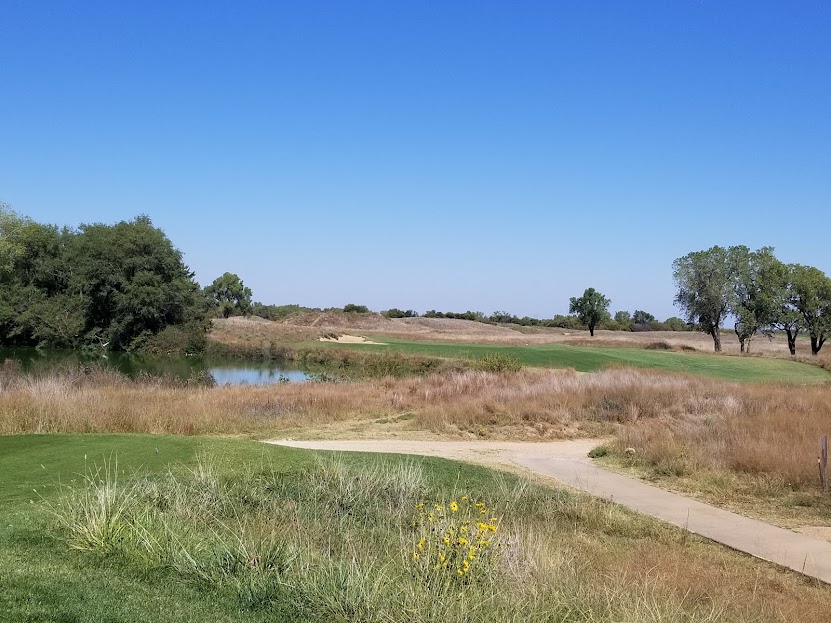
The next six on the course are Press holes, but if you’re a newbie to PD (as I was) there’s no need to fret, there are some real gems coming up. The right to left 11th has you challenging the corner bunker depending on which tee you play.
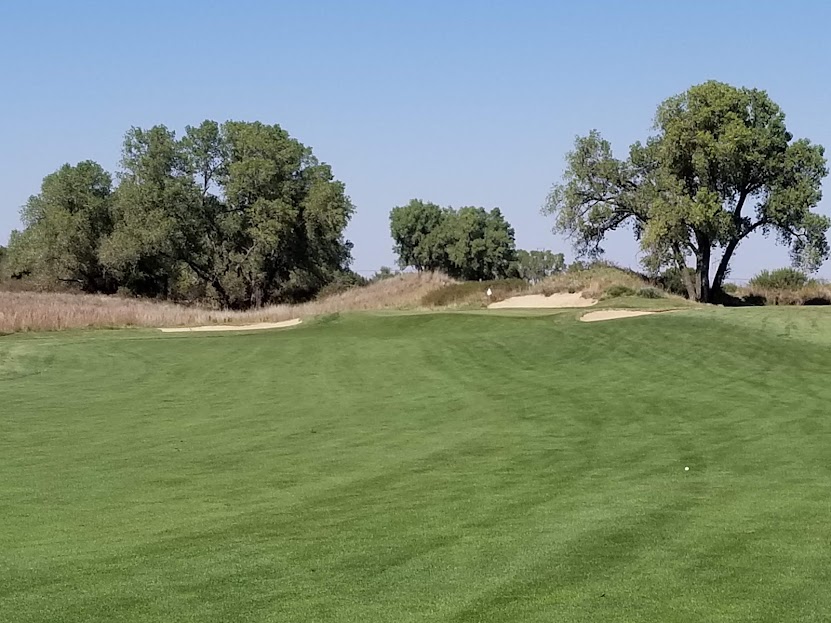
11 approach, chose your club wisely, as anything short will trundle all the way back to flat ground.
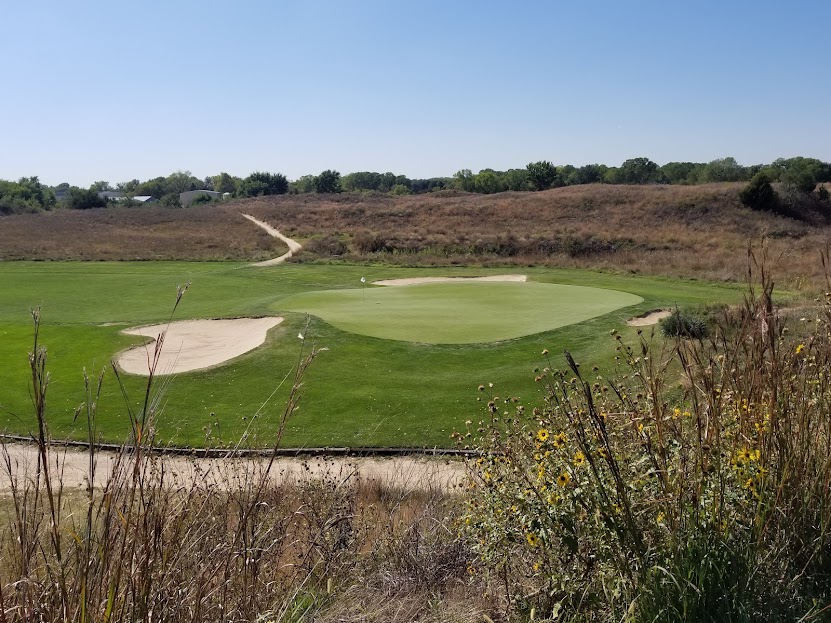
This view of the 11th green complex shows the contouring Press created to emulate his father Perry’s earlier work.
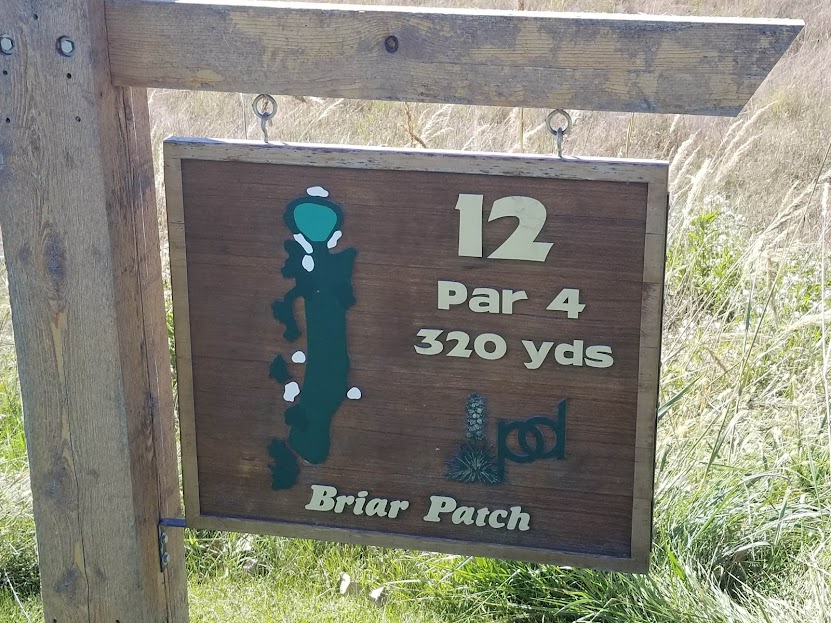

The bottleneck-shaped twelfth “Briar Patch” is quite the beauty but isn’t the pushover that the yardage suggests at 320 yards from the middle tees, the proper angle to approach is from the left-center. The fairway is framed by the tall native grasses while the approach is flanked by Cottonwood trees. There are several scenes at Prairie Dunes that take your breath away, especially in the late afternoon/evening hours. This spot provides one of those.

Approach at 12.
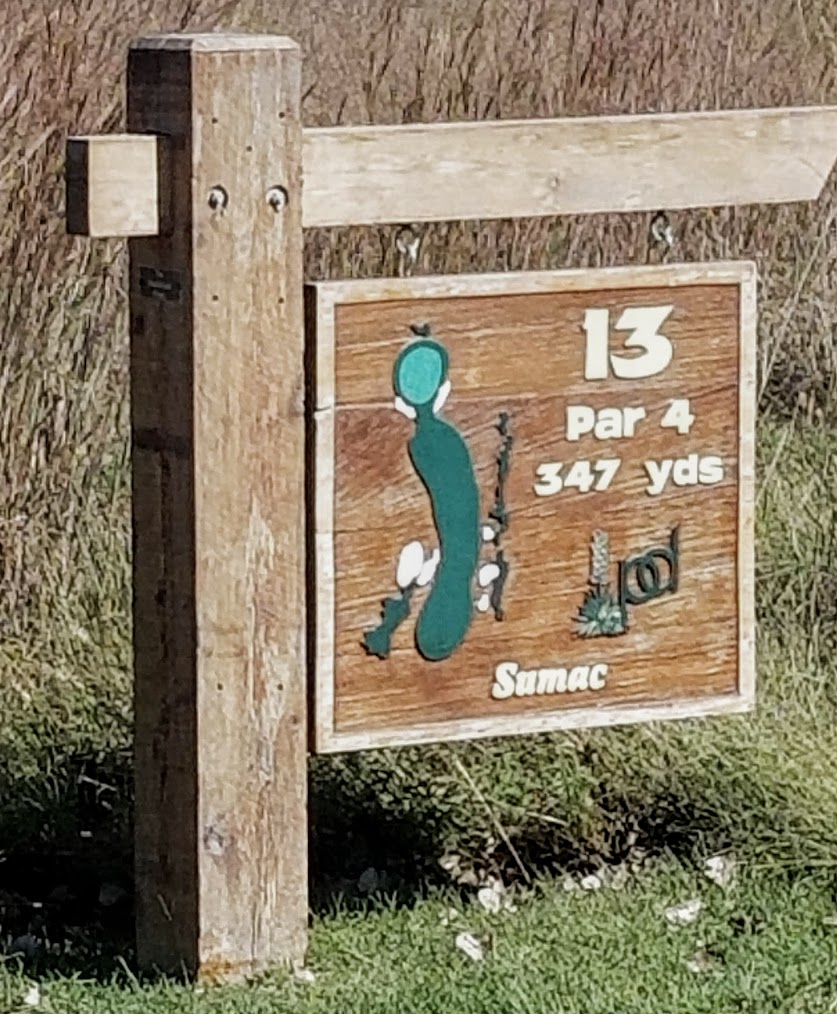
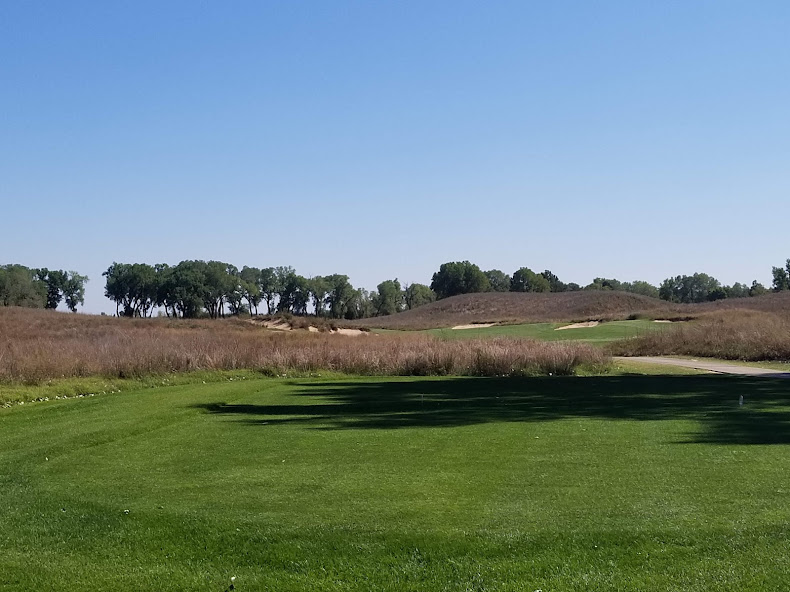
The third consecutive Press design on the back is a sweeping right to left par 4.
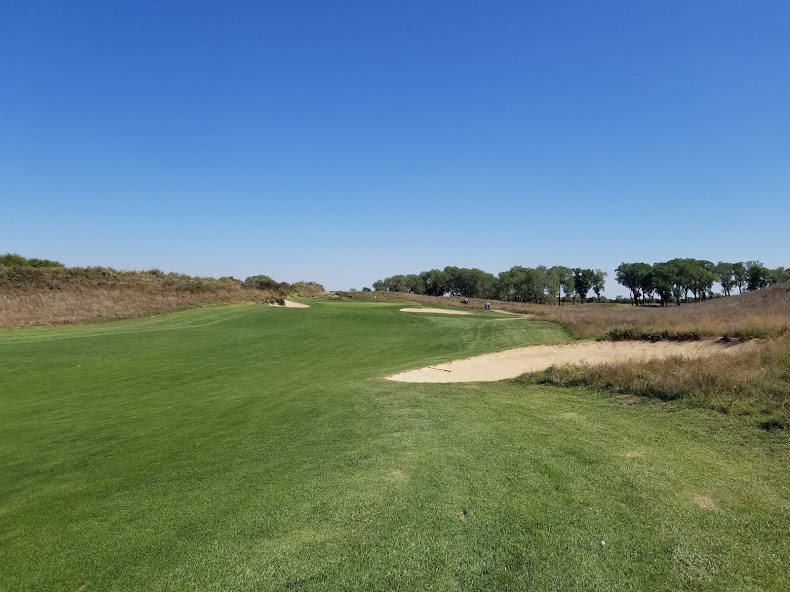
The approach to the 13th.
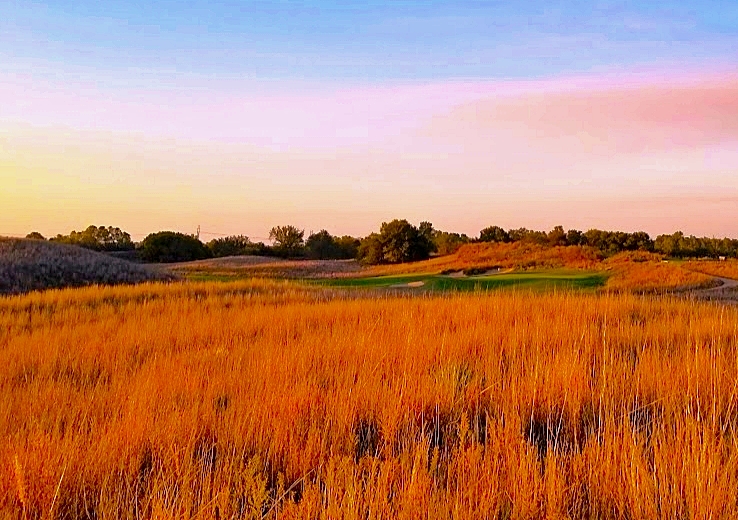
Looking back on the 13th green from the 16th tee, grabbed this gem as the gloaming hour began.
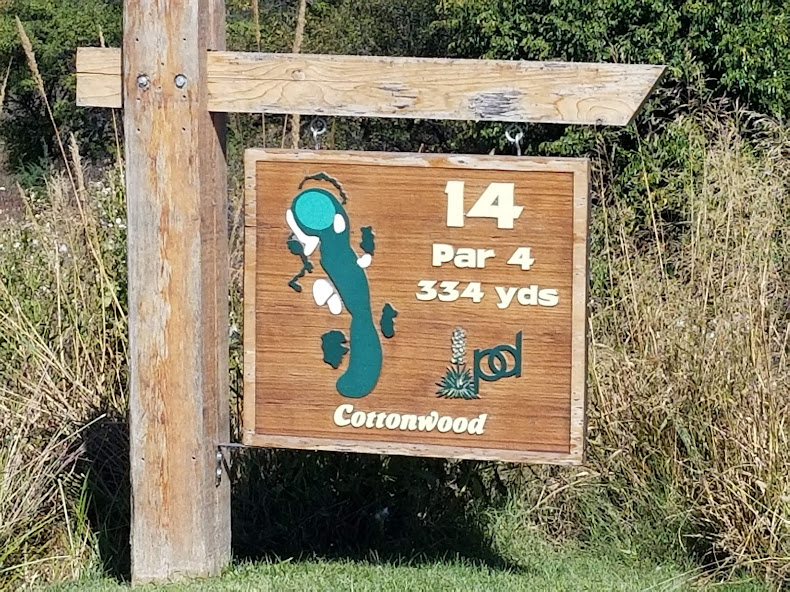
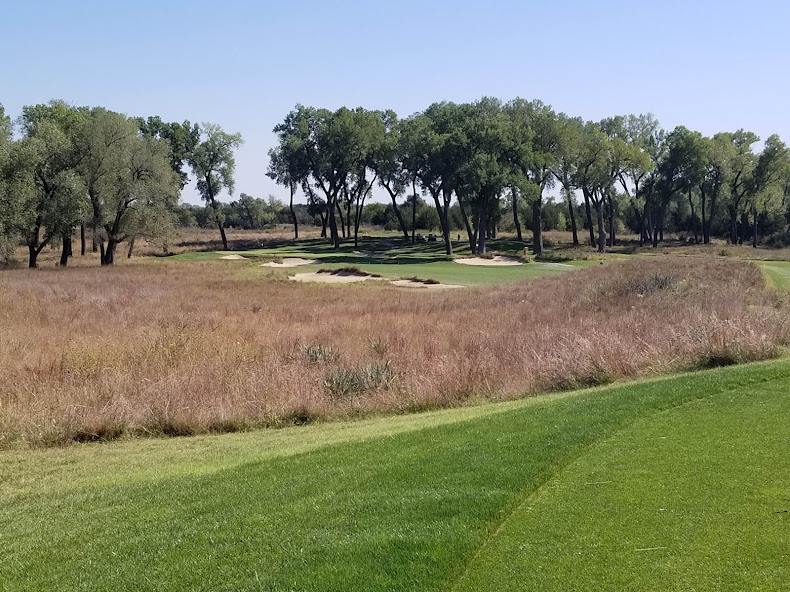
Our personal favorite hole on the property is actually a Press creation, “Cottonwood” – the sharp dogleg left 14th measures out at a wee 324 yards from the middle tees, but as the crow flies it plays closer to 270. Another shorty with trap doors seemingly everywhere. Give it a go or play it conservatively, the large green has some superb undulations and runoffs to keep you honest.
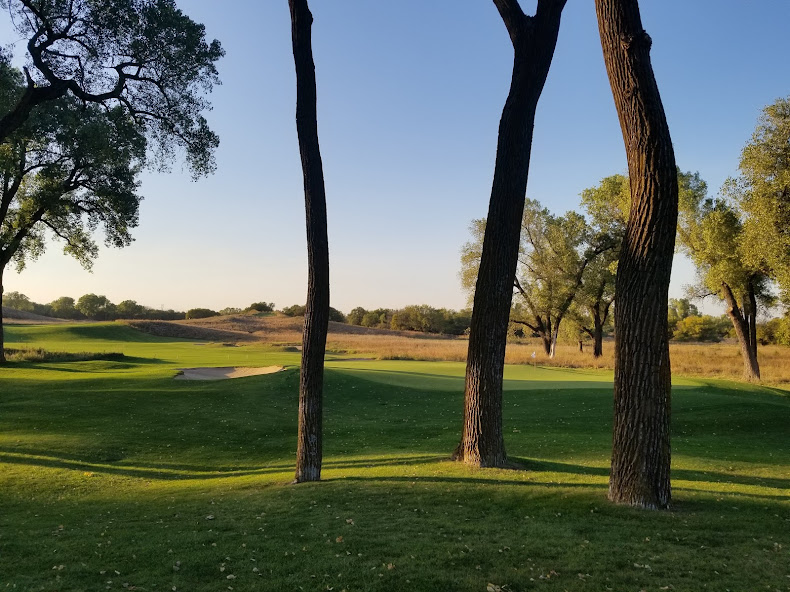
Behind the 14th green, pure serenity. . .
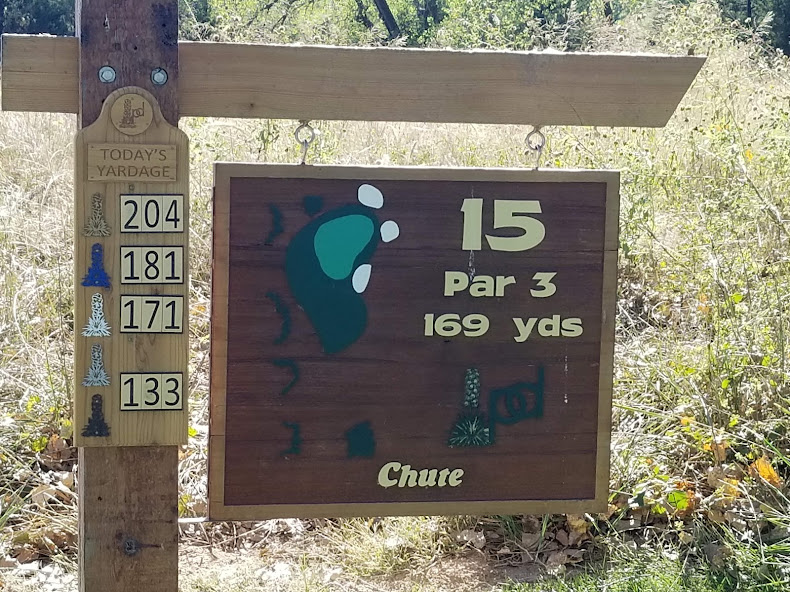
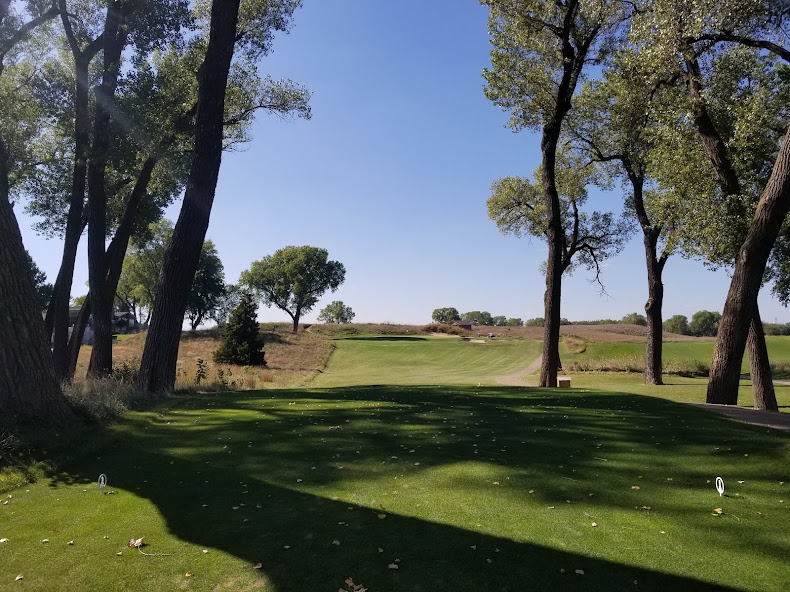
The uphill par 3 15th is Press Maxwell’s most challenging one-shotter at PD. Named “Chute” for obvious reasons, the middle tee played offers a somewhat generous path through the Cottonwoods.
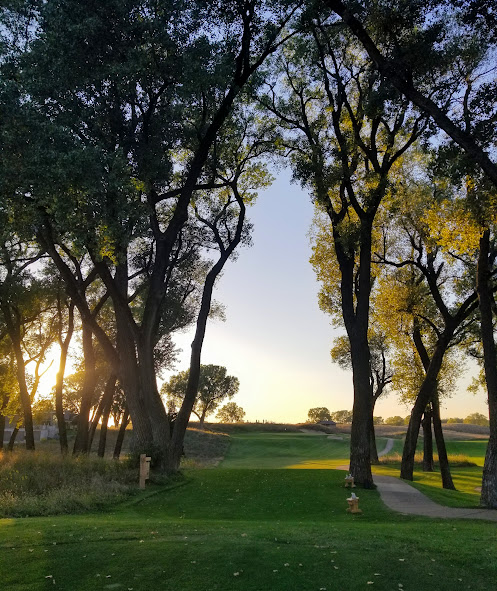
“Chute” is a literal proposition from the back tees at 204 yards.
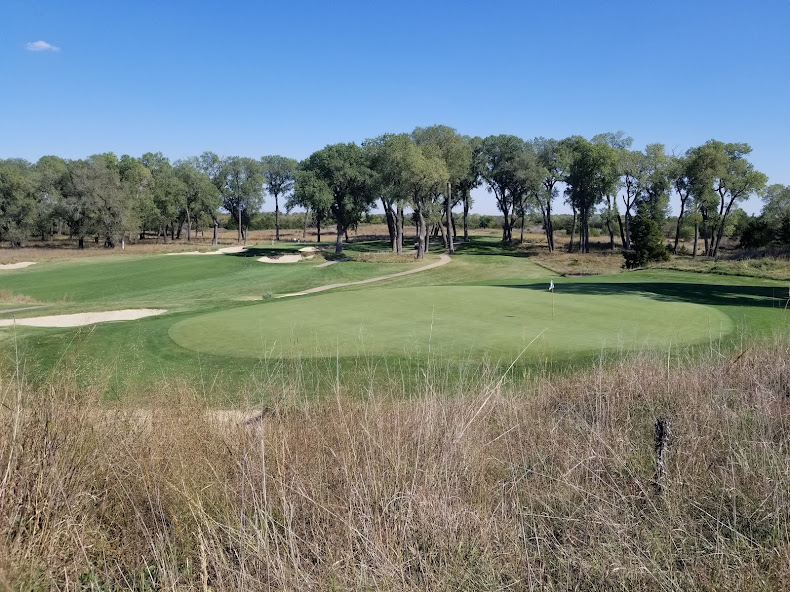
What appears to be such a small target back in the trees, is anything but. A look back at both 15 green and the approach to 14 green (left).
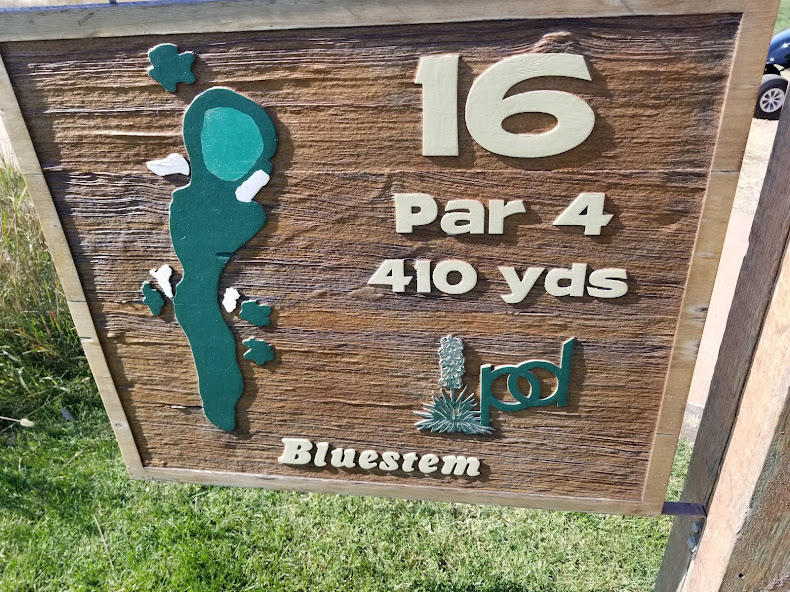
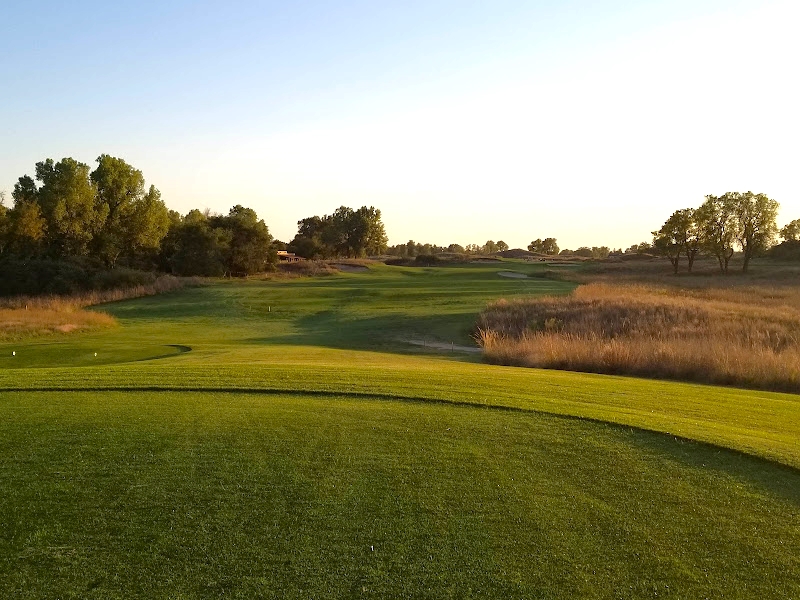
The slightly uphill 420 yard 16th is the final Press Maxwell designed hole on the course. The fairway slides gently left to right, while the approach is to an elevated slender green that features a deep right-side bunker and a high side shoulder left.
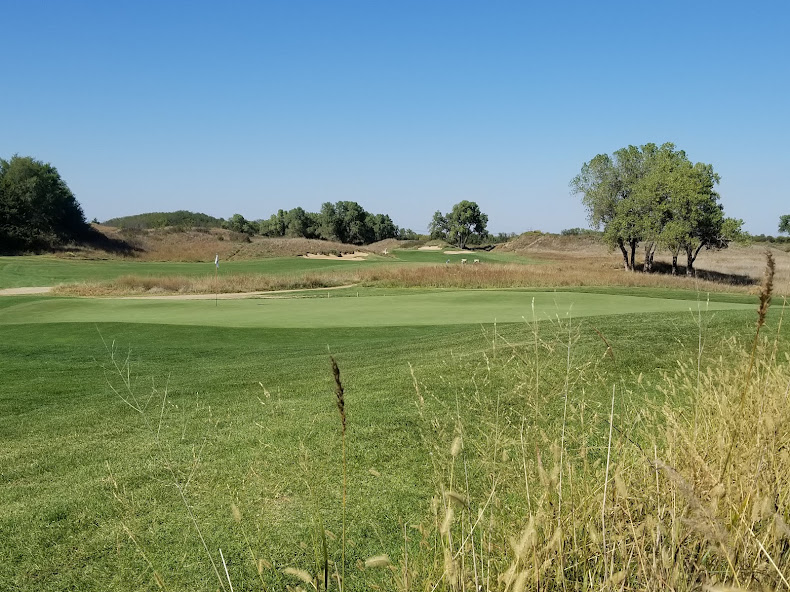
The elongated 16th green sits on a shelf across from the par 4 eleventh fairway (background), note how both the front and rear sections fall off into fairway and rough respectively.
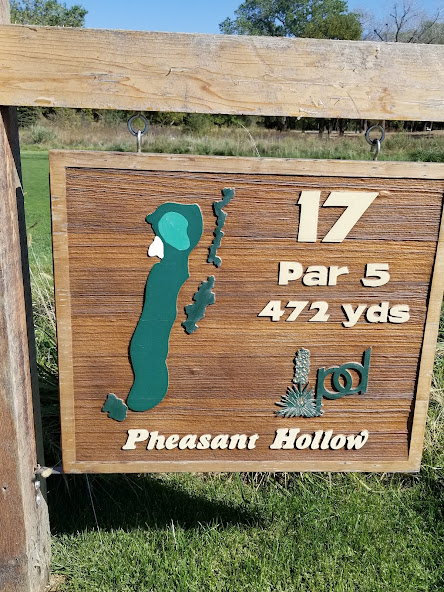
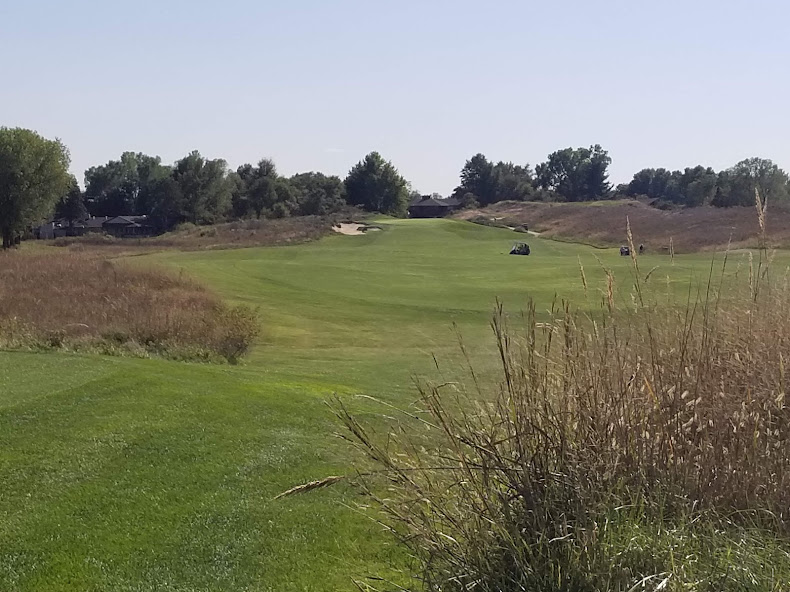
The par 5 – 17th offers a chance to get one back on the scorecard, but in its entirety plays longer than the yardage due to the elevated green site set within the dune. The ultra-wide landing area from the tee gives way to one of the smallest targets at PD. Anything right trundles well below the green’s surface, and anything short left gets snagged by the massive Maxwell bunker that’s wedged into the ascending slope up against the native gunch.
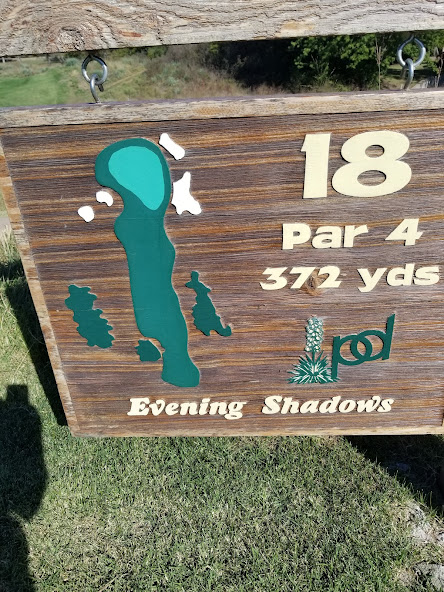
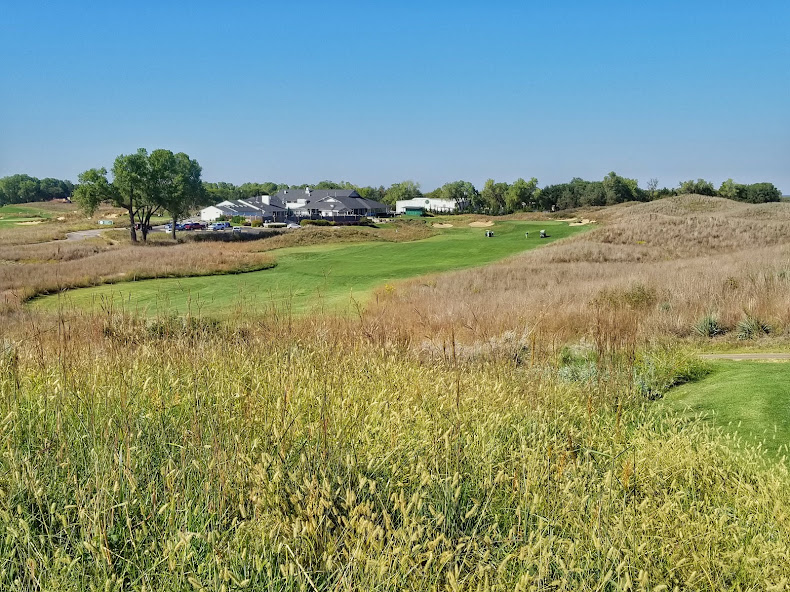
The journey home is a pleasant traverse back down the dunes.
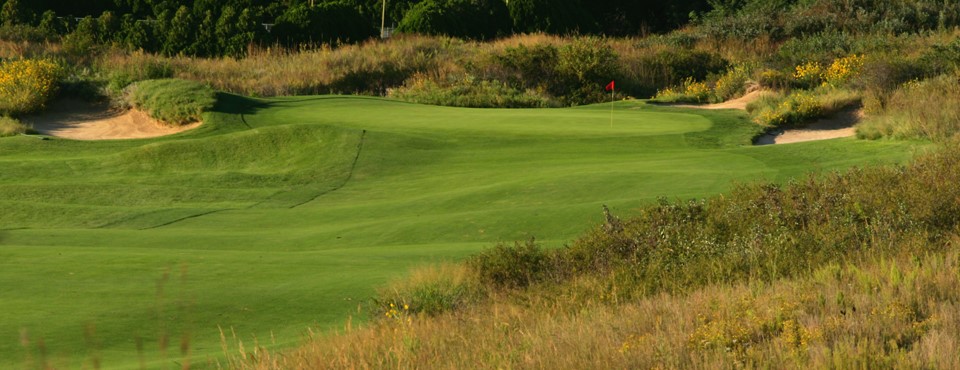
The approach coming home asks two things: Keep the shot below the hole location, BUT not short of the front edge. Anything that fails to qualify leaves a challenging save – especially in the front right location (above) where a ridge just behind the hole location makes the task a tough one. A glorious finisher, not a punisher.
Although PD is a private member club, there are outings in which outside play does occur. The club vibe at Prairie Dunes reflects the exact type of experience one would hope to have at such an iconic classic venue. Friendly, welcoming with no pretentiousness, just a charming place to spend a day with friends on a top 100 course in the world.
More stay n play cottages and a short course is in the works at PD, stay tuned for our Q&A later this spring with Prairie Dunes Superintendent Cory Griess. A big thanks to my host, JD for an outstanding experience.
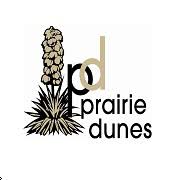
Some additional info on Prairie Dunes according to the design firm of Whitman Axland & Cutten – Prior to the 2006 US Senior’s Open at Prairie Dunes, Dave Axland worked with superintendent P. Stan George to add five bunkers that settled in perfectly with the bunkers already there. The seamless work, along with three new back tees and some minor changes to other tees, was undertaken in consultancy with long-time Prairie Dunes admirers Bill Coore and Ben Crenshaw. Almost 15 years later, Axland’s relationship with the Prairie Dunes is as strong as ever. Dave remains the consulting architect for this top 100 golf course in the world.
For a deeper dive on the history and creation of Prairie Dunes check out Mal Elliott’s book – Perry Maxwell’s Prairie Dunes, Anthony Pioppi’s book – To The Nines, and Garrett Morrison’s feature on the original nine at The Fried Egg.com


